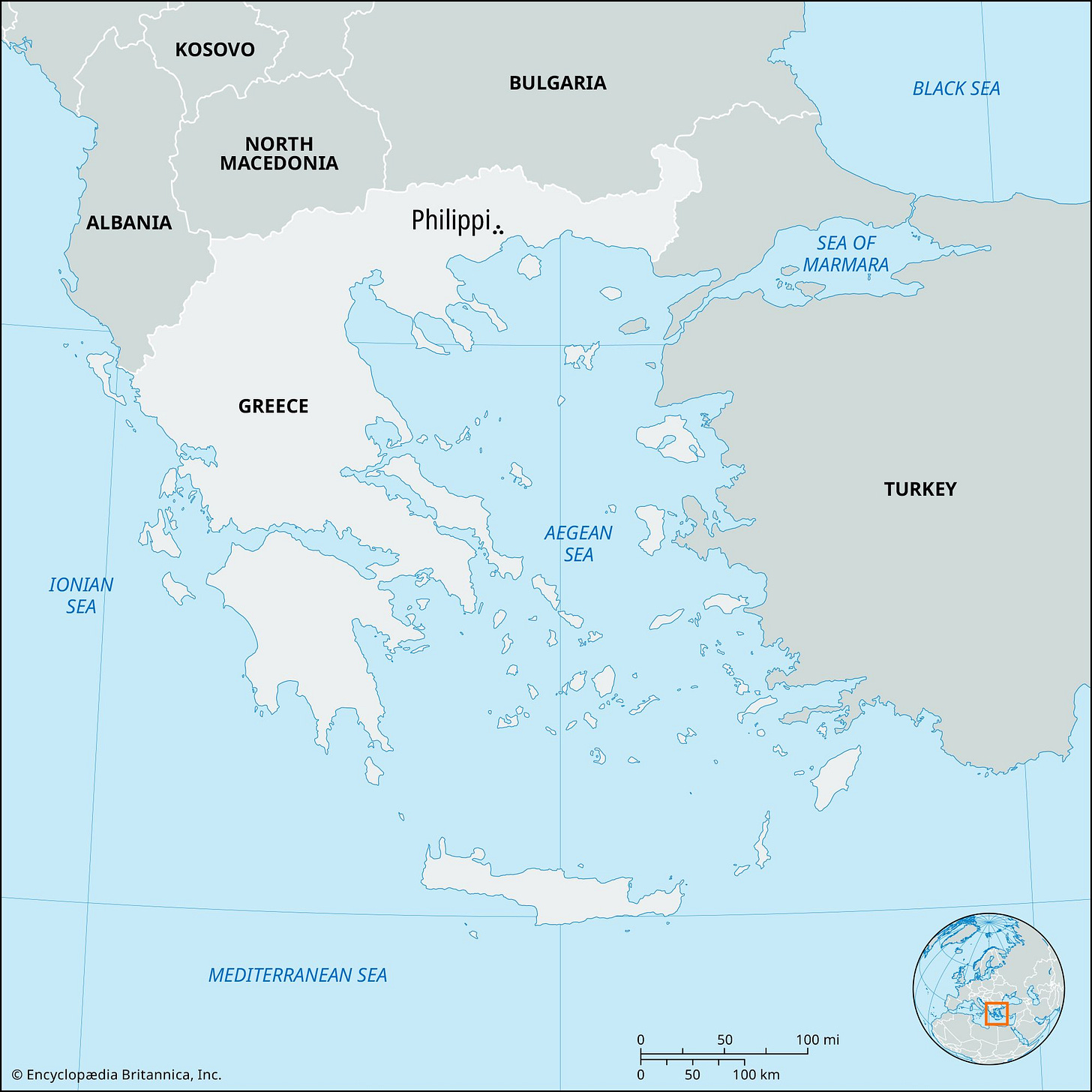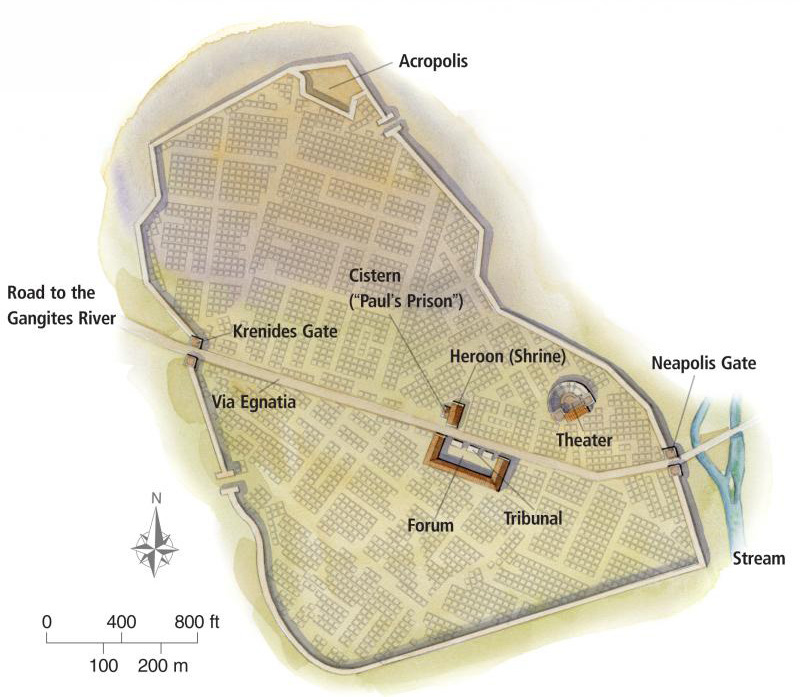Philippians: An Introduction
An overview of the context and historic timeframe for this Epistle written by Paul

My next Bible book that I have selected for a deep dive is the Epistle to the Philippians, a four-chapter letter in the New Testament written by Paul to the followers of Christ Jesus at Philippi. In this introduction, I will look at the context and historic timeframe for this Paulian Epistle.
The splendid resource Gotquestions.org has a good overview of this epistle. Here is an extract of some of that information:
Author: Philippians 1:1 identifies the author of the Book of Philippians as the apostle Paul, likely along with the help of Timothy. Full article: Who wrote the book of Philippians? Who was the author of Philippians?
Date of Writing: The Book of Philippians was written in approximately A.D. 61.
Purpose of Writing: The Epistle to the Philippians, one of Paul’s prison epistles, was written in Rome. It was at Philippi, which the apostle visited on his second missionary journey (Acts 16:12), that Lydia and the Philippian jailer and his family were converted to Christ. Now, some few years later, the church was well established, as may be inferred from its address which includes “bishops (elders) and deacons” (Philippians 1:1).
The occasion of the epistle was to acknowledge a gift of money from the church at Philippi, brought to the apostle by Epaphroditus, one of its members (Philippians 4:10-18). This is a tender letter to a group of Christians who were especially close to the heart of Paul (2 Corinthians 8:1-6), and comparatively little is said about doctrinal error.…
Brief Summary: Philippians can be called “Resources Through Suffering.” The book is about Christ in our life, Christ in our mind, Christ as our goal, Christ as our strength, and joy through suffering. It was written during Paul’s imprisonment in Rome, about thirty years after Christ’s ascension and about ten years after Paul first preached at Philippi.
Paul was Nero’s prisoner, yet the epistle fairly shouts with triumph, the words “joy” and “rejoice” appearing frequently (Philippians 1:4, 18, 25, 26; 2:2, 28; Philippians 3:1, 4:1, 4, 10). Right Christian experience is the outworking, whatever our circumstances may be, of the life, nature, and mind of Christ living in us (Philippians 1:6, 11; 2:5, 13). Philippians reaches its pinnacle at 2:5-11 with the glorious and profound declaration regarding the humiliation and exaltation of our Lord Jesus Christ.
I will be consulting the usual resources (Precept Austin, Enduring Word, the Blue Letter Bible, Gotquestions.org) during this analysis, but may find other appropriate resources as I go along. We first met the new church in Philippi when Paul traveled to this region in eastern Greece on his second missionary journey in Acts 16.
Here is a map from the Encyclopedia Britannica showing the location of Philippi:
From Precept Austin here is the timeline of Philippians, showing the letter being written between A.D. 61-63 while Paul was in prison in Rome. The church was founded on his second missionary journey, so this is about 10 years later:
Also from Precept Austin here is a profile of what Philippi probably looked like during the time of Paul:
The cistern labeled “Paul’s Prison” had nothing to do with Paul, but was a likely worship location for the Christians.
So with that introduction out of the way, my next devotional will examine Philippians 1:1-2 - A greeting from Paul and Timothy to the church at Philippi.
Heaven on Wheels Daily Prayer:
Dear Lord - As I enter into the joyful words of Paul in this epistle, I pray for Your guidance and for my insight. I love You, Lord! Amen.
Scripture quotations taken from the (NASB®) New American Standard Bible®, Copyright © 1960, 1971, 1977, 1995 by The Lockman Foundation. Used by permission. All rights reserved. lockman.org
Gotquestions.org was accessed on 6/20/2025 to answer the question, A Summary of Philippians.
Precept Austin was accessed on 6/20/2025 to review commentary for the epistle to the Philippians (general).





